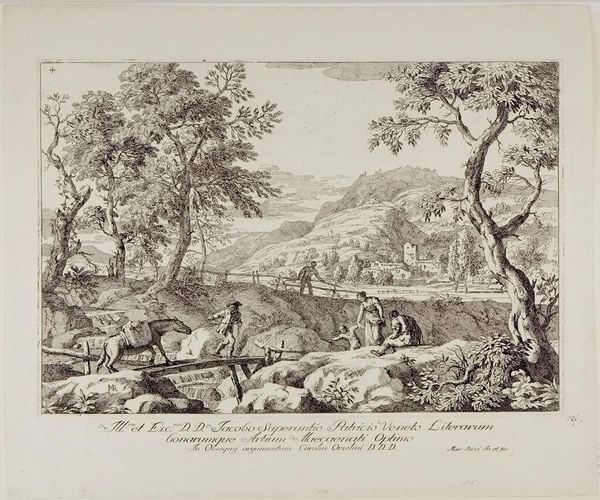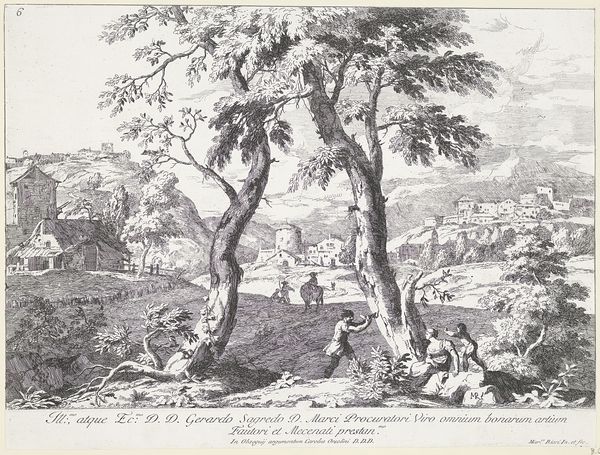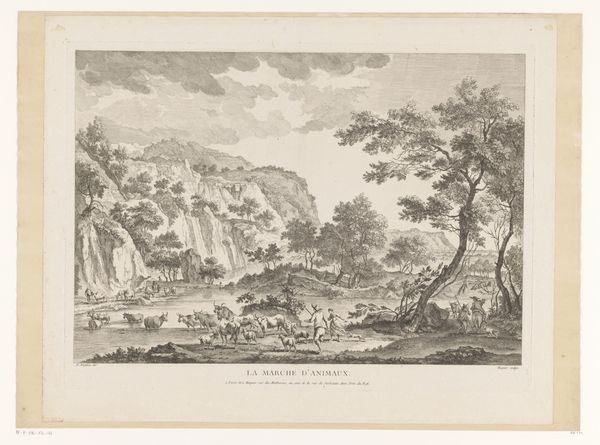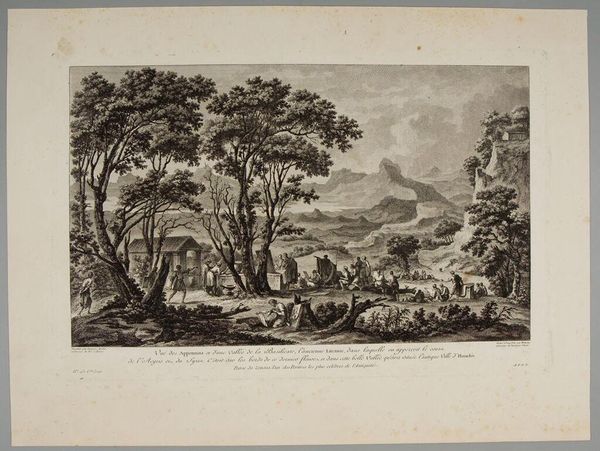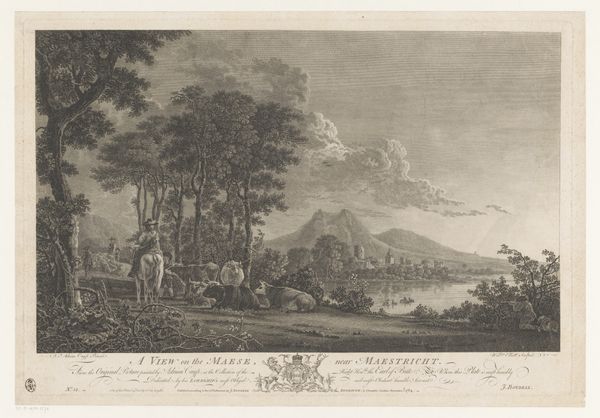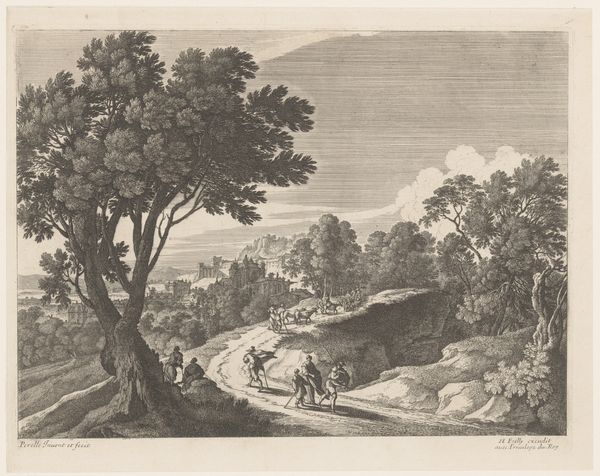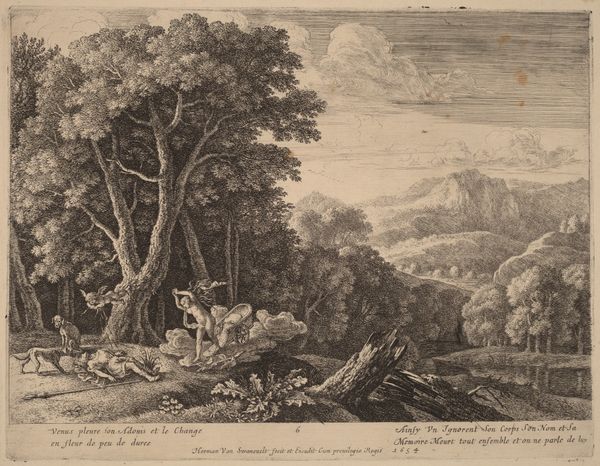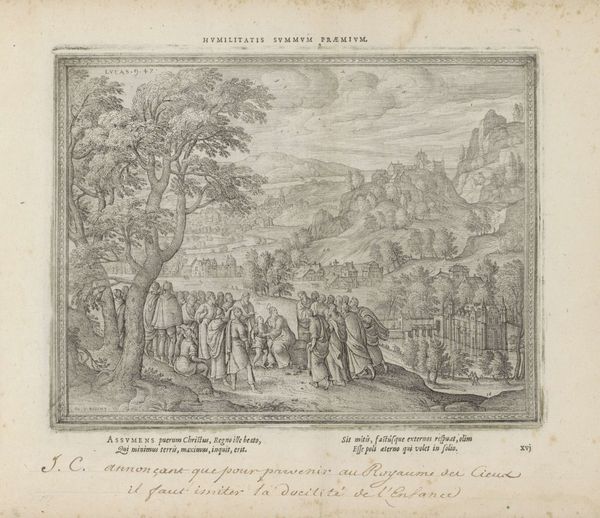
Plate 4: landscape with man leading a pack horse across a wooden bridge, three figures in right foreground, the silhouette of a man standing at a fence beyond, from 'Landscapes' 1723 - 1730
0:00
0:00
drawing, print, engraving
#
drawing
#
baroque
# print
#
landscape
#
figuration
#
engraving
Dimensions: Plate: 12 11/16 × 17 1/16 in. (32.2 × 43.4 cm) Sheet: 13 11/16 × 20 1/2 in. (34.8 × 52.1 cm)
Copyright: Public Domain
Curator: Let's discuss "Plate 4: landscape with man leading a pack horse across a wooden bridge, three figures in right foreground, the silhouette of a man standing at a fence beyond, from 'Landscapes'." Marco Ricci created this engraving sometime between 1723 and 1730. It’s currently held at the Metropolitan Museum of Art. What strikes you most about it? Editor: Immediately, I'm drawn to the serenity and subtle activity woven into this landscape. The contrast of the detailed foreground with the almost dreamlike rendering of the distant hills evokes a peaceful, yet observant quality. Curator: Absolutely. Ricci was working within a tradition of landscape prints designed to be both aesthetically pleasing and culturally informative. Prints like this were often collected as a form of "armchair tourism," allowing people to experience vistas they might never actually visit. This one shows an idealized view of rural life, which we might see as politically charged depending on how it contrasts to reality. Editor: The very ordinary elements—the man with the horse, the resting figures—placed in the composition call to mind issues of labor, land use, and the ever-present negotiation between humans and the environment. Are we looking at the fruits of exploitation or harmony? This can spark discussions about the role of art in reflecting—or shaping—perceptions of nature and society. Curator: The Baroque influence is evident in the dynamic composition and intricate details, but there’s a restraint, perhaps hinting at the shift toward more sober styles later in the 18th century. He carefully crafts this vision, which reminds us about what patrons desired during that era and why. The art market also shaped perceptions. Editor: Indeed. Reflecting on our engagement with landscapes as idyllic scenes and potential settings of class and power dynamics forces us to grapple with how we, today, internalize and project values of society and equity onto the environment. Curator: And perhaps reminds us how easily picturesque scenes obscure the complex social realities they present. Thank you for pointing to those deeper resonances. Editor: My pleasure. Seeing art this way helps to unveil layered truths.
Comments
No comments
Be the first to comment and join the conversation on the ultimate creative platform.
